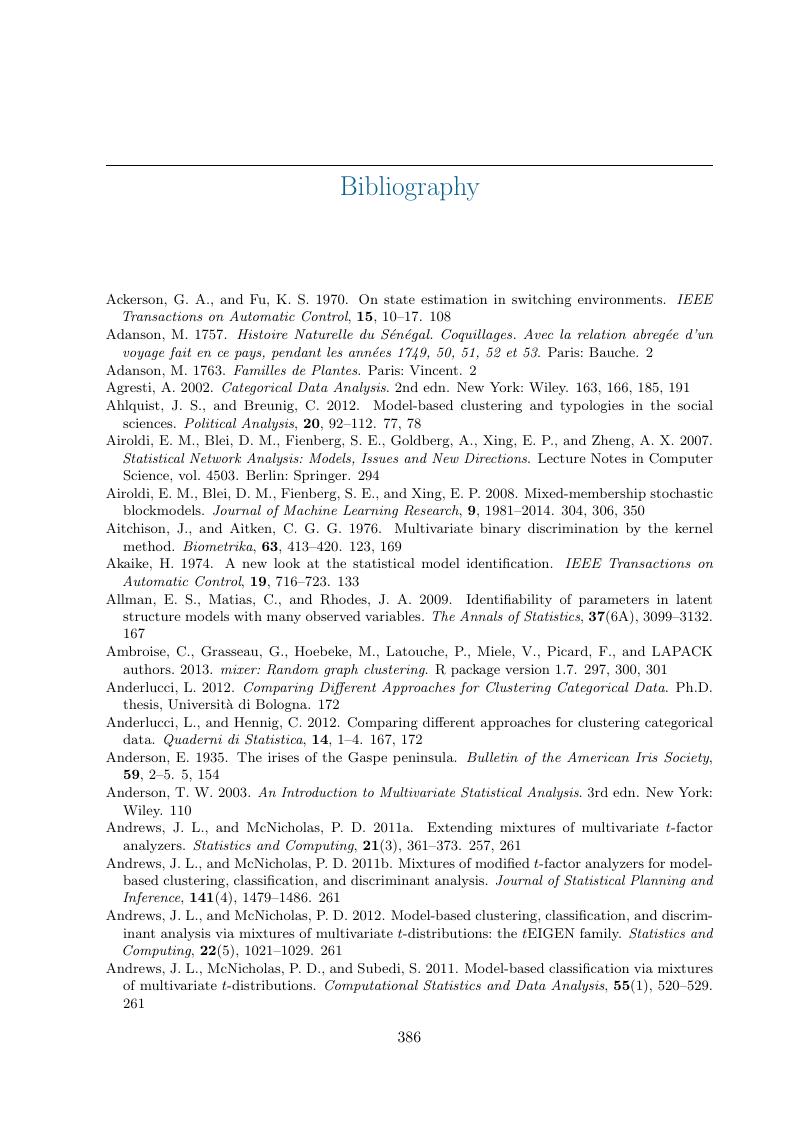Book contents
- Frontmatter
- Dedication
- Contents
- Contents
- Preface
- 1 Introduction
- 2 Model-based Clustering: Basic Ideas
- 3 Dealing with Difficulties
- 4 Model-based Classification
- 5 Semi-supervised Clustering and Classification
- 6 Discrete Data Clustering
- 7 Variable Selection
- 8 High-dimensional Data
- 9 Non-Gaussian Model-based Clustering
- 10 Network Data
- 11 Model-based Clustering with Covariates
- 12 Other Topics
- List of R Packages
- Bibliography
- Author Index
- Subject Index
- References
Bibliography
Published online by Cambridge University Press: 14 June 2019
- Frontmatter
- Dedication
- Contents
- Contents
- Preface
- 1 Introduction
- 2 Model-based Clustering: Basic Ideas
- 3 Dealing with Difficulties
- 4 Model-based Classification
- 5 Semi-supervised Clustering and Classification
- 6 Discrete Data Clustering
- 7 Variable Selection
- 8 High-dimensional Data
- 9 Non-Gaussian Model-based Clustering
- 10 Network Data
- 11 Model-based Clustering with Covariates
- 12 Other Topics
- List of R Packages
- Bibliography
- Author Index
- Subject Index
- References
Summary

- Type
- Chapter
- Information
- Model-Based Clustering and Classification for Data ScienceWith Applications in R, pp. 386 - 414Publisher: Cambridge University PressPrint publication year: 2019
References
- 1
- Cited by

